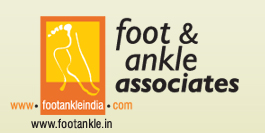

 |

| Heel Disorders and Treatments | |
Plantar fasciitis and heel spur
syndrome result from inflammation of the ligament like tissue (the
fascia) that stretches from the base of the toes, across the arch
of the foot, to a point on the bottom of the heel bone. It is sometimes
associated with a heel spur, in which case it is called "heel
spur syndrome." The condition can usually be successfully treated
with conservative measures such as use of anti-inflammatory medications
and ice packs, stretching exercises, orthotic devices, and physical
therapy. If the condition does not clear up after six months of
these treatments, Extracorporeal Shock Wave Therapy may be considered. Sharp pain, aching or stiffness on the bottom of one or both heels is a very common ailment. The pain is often at its worst upon awakening in the morning (or after sitting down for an extended period and then resuming activity), causing hobbling or limping for a few minutes before a comfortable stride can be resumed. As weight continues to be applied during walking or standing, mild or severe pain may persist. sprained ankleprotocol has been set up to assist with ankle sprains and prevent future problems. Ankle sprains are categorized according to the level of damage to the region. Prior to treatment, the type of sprain must be understood. |
 |
| ©
Foot & Ankle Associates. All Rights Reserved. |
Website Powered
by : Sterling Softwares |